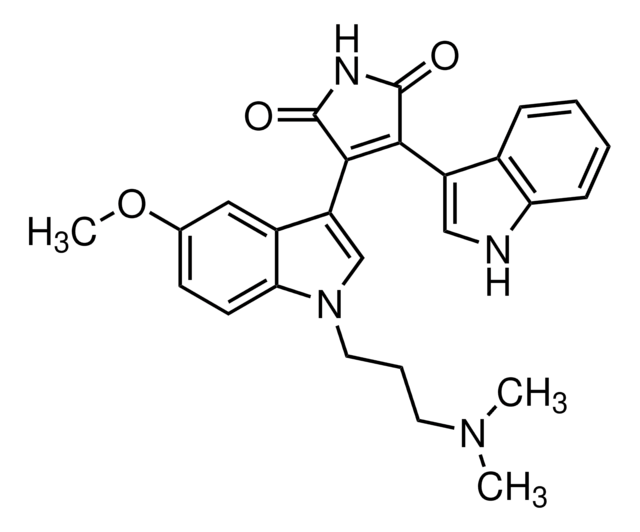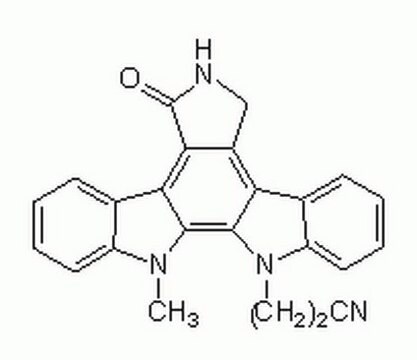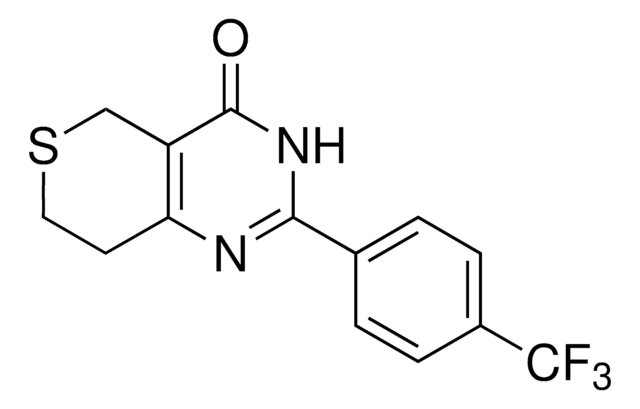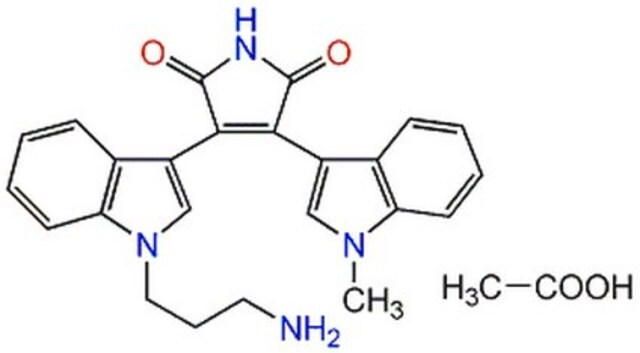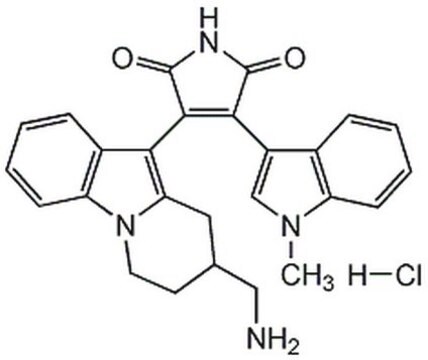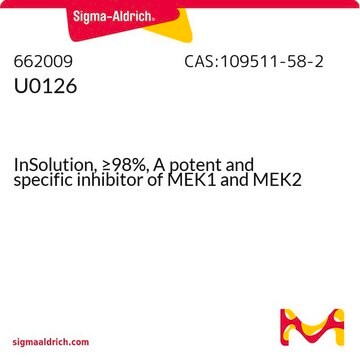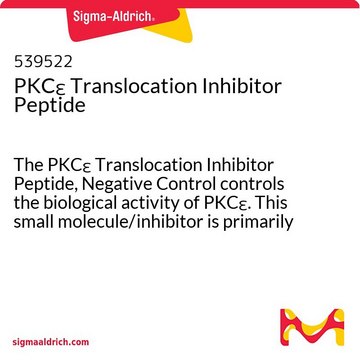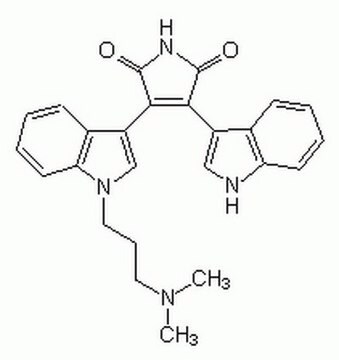365251
Gö 6983
A potent, cell-permeable, reversible, and ATP-competitive inhibitor of protein kinase C (PKC) that inhibits several PKC isozymes.
Sinonimo/i:
Gö 6983, 2-[1-(3-Dimethylaminopropyl)-5-methoxyindol-3-yl]-3-(1H-indol-3-yl) maleimide, Go 6983
About This Item
Prodotti consigliati
Livello qualitativo
Saggio
≥98% (HPLC)
Stato
solid
Produttore/marchio commerciale
Calbiochem®
Condizioni di stoccaggio
OK to freeze
protect from light
Colore
orange-red
Solubilità
DMSO: 100 mg/mL
Condizioni di spedizione
ambient
Temperatura di conservazione
−20°C
Stringa SMILE
N1C(=O)C(=C(C1=O)c4c5c([nH]c4)cccc5)c2c3c([n](c2)CCCN(C)C)ccc(c3)OC
InChI
1S/C26H26N4O3/c1-29(2)11-6-12-30-15-20(18-13-16(33-3)9-10-22(18)30)24-23(25(31)28-26(24)32)19-14-27-21-8-5-4-7-17(19)21/h4-5,7-10,13-15,27H,6,11-12H2,1-3H3,(H,28,31,32)
LLJJDLHGZUOMQP-UHFFFAOYSA-N
Descrizione generale
Azioni biochim/fisiol
PKCα and PKCβ
Attenzione
Altre note
Stempka, L., et al. 1997. J. Biol. Chem. 272, 6805.
Gschwendt, M., et al. 1996. FEBS Lett. 392, 77.
Note legali
Codice della classe di stoccaggio
11 - Combustible Solids
Classe di pericolosità dell'acqua (WGK)
WGK 3
Certificati d'analisi (COA)
Cerca il Certificati d'analisi (COA) digitando il numero di lotto/batch corrispondente. I numeri di lotto o di batch sono stampati sull'etichetta dei prodotti dopo la parola ‘Lotto’ o ‘Batch’.
Possiedi già questo prodotto?
I documenti relativi ai prodotti acquistati recentemente sono disponibili nell’Archivio dei documenti.
Il team dei nostri ricercatori vanta grande esperienza in tutte le aree della ricerca quali Life Science, scienza dei materiali, sintesi chimica, cromatografia, discipline analitiche, ecc..
Contatta l'Assistenza Tecnica.